Kyzyl Monteiro
Teachable Reality: Prototyping Tangible Augmented Reality with Everyday Objects by Leveraging Interactive Machine Teaching
Feb 21, 2023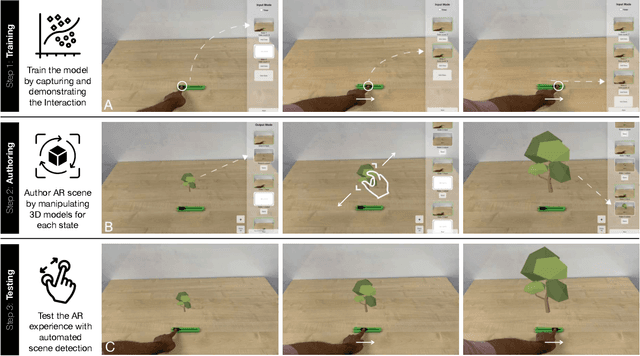
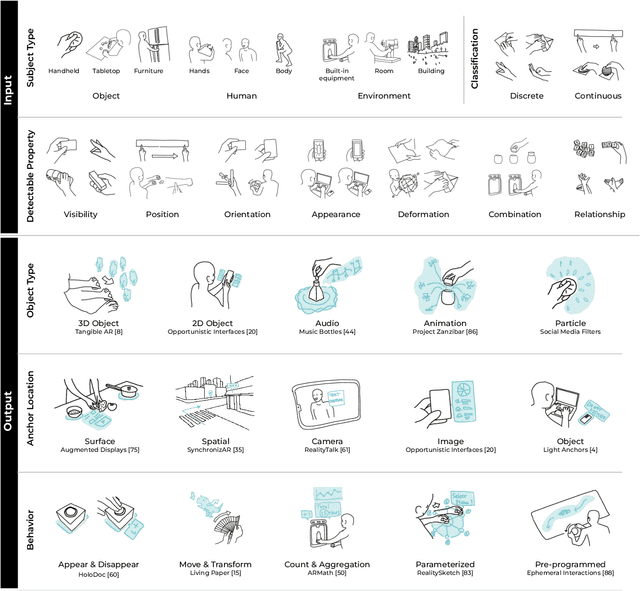


Abstract:This paper introduces Teachable Reality, an augmented reality (AR) prototyping tool for creating interactive tangible AR applications with arbitrary everyday objects. Teachable Reality leverages vision-based interactive machine teaching (e.g., Teachable Machine), which captures real-world interactions for AR prototyping. It identifies the user-defined tangible and gestural interactions using an on-demand computer vision model. Based on this, the user can easily create functional AR prototypes without programming, enabled by a trigger-action authoring interface. Therefore, our approach allows the flexibility, customizability, and generalizability of tangible AR applications that can address the limitation of current marker-based approaches. We explore the design space and demonstrate various AR prototypes, which include tangible and deformable interfaces, context-aware assistants, and body-driven AR applications. The results of our user study and expert interviews confirm that our approach can lower the barrier to creating functional AR prototypes while also allowing flexible and general-purpose prototyping experiences.
Sketched Reality: Sketching Bi-Directional Interactions Between Virtual and Physical Worlds with AR and Actuated Tangible UI
Aug 12, 2022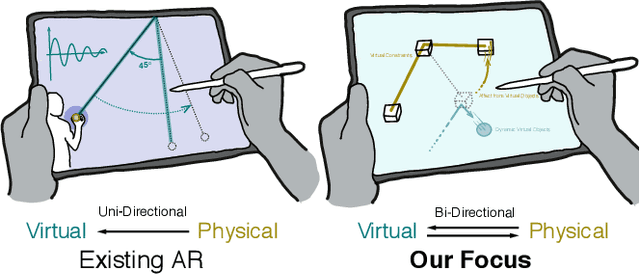
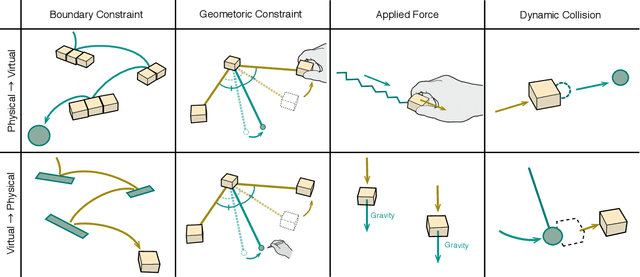
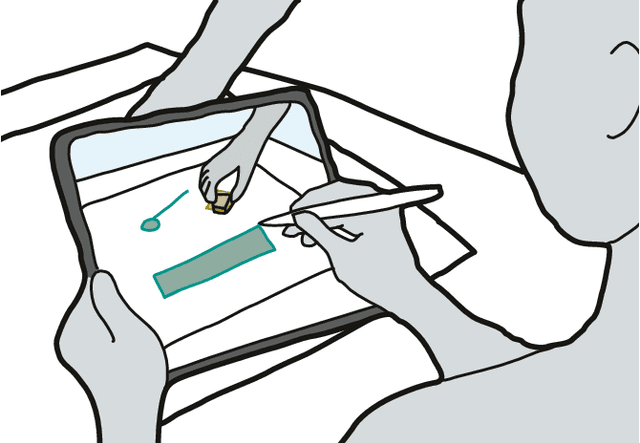

Abstract:This paper introduces Sketched Reality, an approach that combines AR sketching and actuated tangible user interfaces (TUI) for bidirectional sketching interaction. Bi-directional sketching enables virtual sketches and physical objects to "affect" each other through physical actuation and digital computation. In the existing AR sketching, the relationship between virtual and physical worlds is only one-directional -- while physical interaction can affect virtual sketches, virtual sketches have no return effect on the physical objects or environment. In contrast, bi-directional sketching interaction allows the seamless coupling between sketches and actuated TUIs. In this paper, we employ tabletop-size small robots (Sony Toio) and an iPad-based AR sketching tool to demonstrate the concept. In our system, virtual sketches drawn and simulated on an iPad (e.g., lines, walls, pendulums, and springs) can move, actuate, collide, and constrain physical Toio robots, as if virtual sketches and the physical objects exist in the same space through seamless coupling between AR and robot motion. This paper contributes a set of novel interactions and a design space of bi-directional AR sketching. We demonstrate a series of potential applications, such as tangible physics education, explorable mechanism, tangible gaming for children, and in-situ robot programming via sketching.
 Add to Chrome
Add to Chrome Add to Firefox
Add to Firefox Add to Edge
Add to Edge